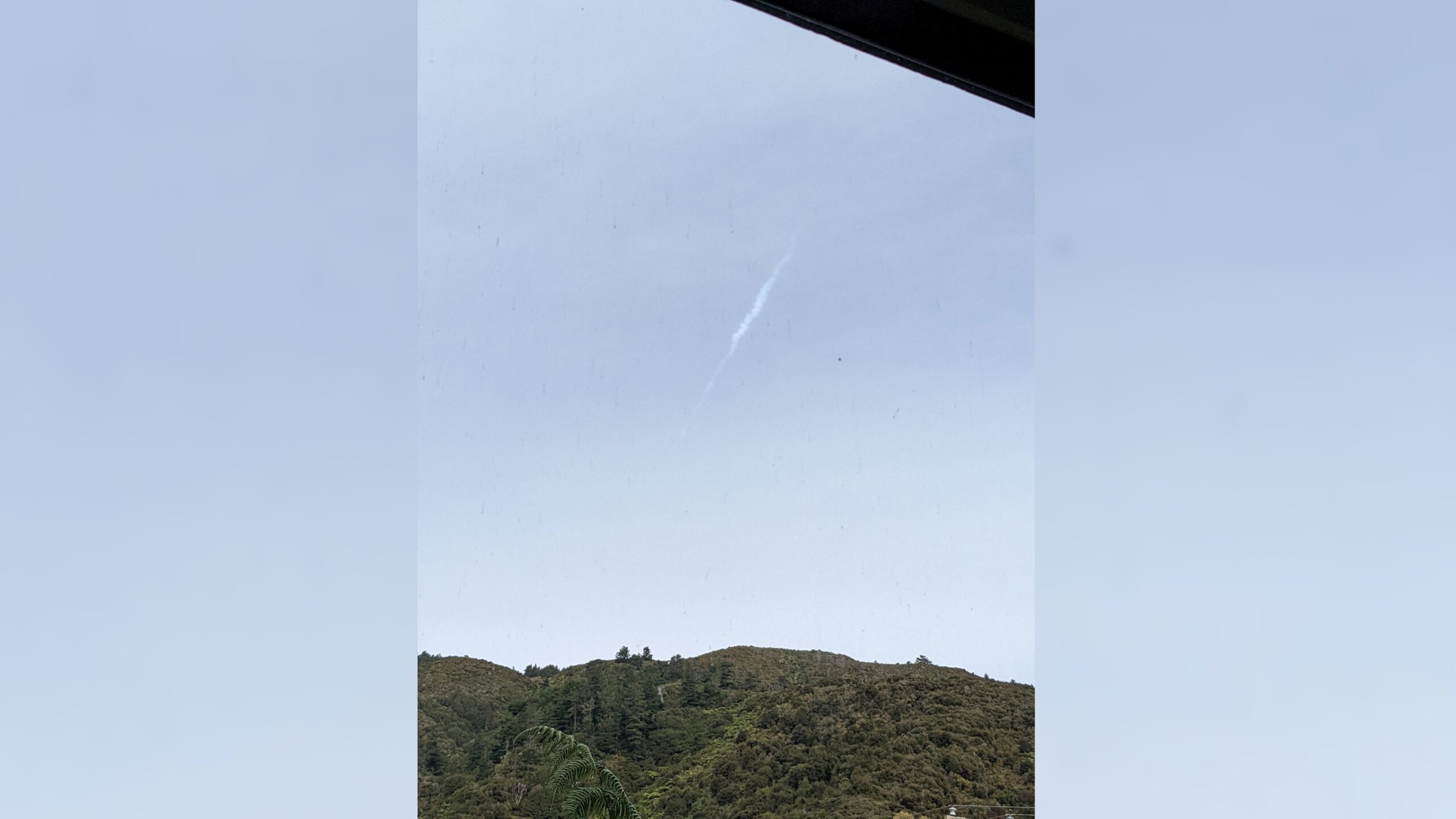Around 2pm witnesses reported seeing a bright flash of light in sky above Wellington and Wairarapa.
Experts say the flash was likely caused by a meteoroid or a satellite entering the atmosphere.
The SMC asked experts to comment.
Dr Ian Griffin, Director, Otago Museum, comments:
“It sounds like there has been a really interesting event somewhere in Wellington, as many people have reported a ball of fire in the sky.
“This could be a number of things, either a re-entering satellite or potentially a meteoroid, which is a space rock coming through the Earth’s atmosphere and surviving its passage.
“If you’ve got video or photographs of the event it’s really important to keep them, as we might be able to use them to triangulate the position of the thing, and where it landed – if it did land.
“Also if you saw it and heard a bang, that’s quite interesting too. If you know the time between when you saw the flash of light heard the bang that gives us a sense of distance.
“I’d also encourage the folks in charge of the seismometers in the country to see if they recorded vibrations from the shockwave of this thing exploding.
“It may be quite scientifically important to retrieve this thing. Meteorites in this country are quite rare so actually getting one would be quite cool.”
No conflict of interest declared.
Dr Duncan Steel, space scientist, comments:
“Eyewitness accounts are still coming in so it will be interesting to hear specifically what people saw.
“In my lifetime I’ve only ever seen one daytime meteor. They are due to macrometeoroids in the atmosphere coming in very quickly, typically 30km per second. To be seen during the daytime it would need to be quite large, something the size of a rugby ball or bigger – that’s what makes them rare. The shooting stars you see at night are typically about the size of a grape.
“It’s possible it could be a re-entering piece of space debris that humanity has put into orbit. But generally it’s more likely to be a natural meteoroid because we actually get hit by about a hundred tons a day of natural meteoroids. We do have databanks showing expected re-entries of objects from orbit and maybe it’s possible to identify this object from that. But if not, it’s probably just a random lump of rock from an asteroid which happens to have hit the Earth and got people very excited here in New Zealand.
“This is a brilliant witness report from Rebecca Vergunst. She saw the meteor, and heard a crackle at the same time: that’s an ELECTROPHONIC SOUND. I would bet she has long hair, or wears glasses, or was wearing a hat. I know that sounds bizarre! It seems that you need a receiver near the ears to pick up radio emissions from the meteor, hence the immediate crackling sounds. The later big bang is the shock wave, which arrives at the speed of sound – much slower.”
No conflict of interest declared.
Stephen Bannister, Principal Scientist – Seismologist, GNS Science, comments:
“GeoNet earthquake seismometers around the Wellington region appear to have recorded the atmospheric shock wave from the meteor, which likely weakly coupled to the ground, enabling detection by the earthquake seismometers. The shock wave was first detected by the GeoNet seismometer PLWZ, which is located on the east side of Palliser Bay
“This image illustrates the recordings from 6 of the GeoNet seismometers in the Wellington region – each trace represents the record from a different seismometer – spread across the Wellington region. The top trace is PLWZ (Palliser Bay), the lowest trace is from a seismometer CAW (Upper Hutt, about 53 km to the north-west of PLWZ). The differences in the arrival times of the signal across the 6 seismometers are consistent with the speed of sound in air.
“People also completed felt reports at the time, which we believe come from people feeling the shockwave.”
No conflict of interest declared.
An interesting signature from the Wellington Radar, at 1:52pm.
This shows a cross-section of the atmosphere, with what may be the smoke trail of the meteor ☄ that passed over the lower North Island.
It’s about the right place and time, and it’s not meteorological. pic.twitter.com/2pY3WqzenT
— MetService (@MetService) July 7, 2022
